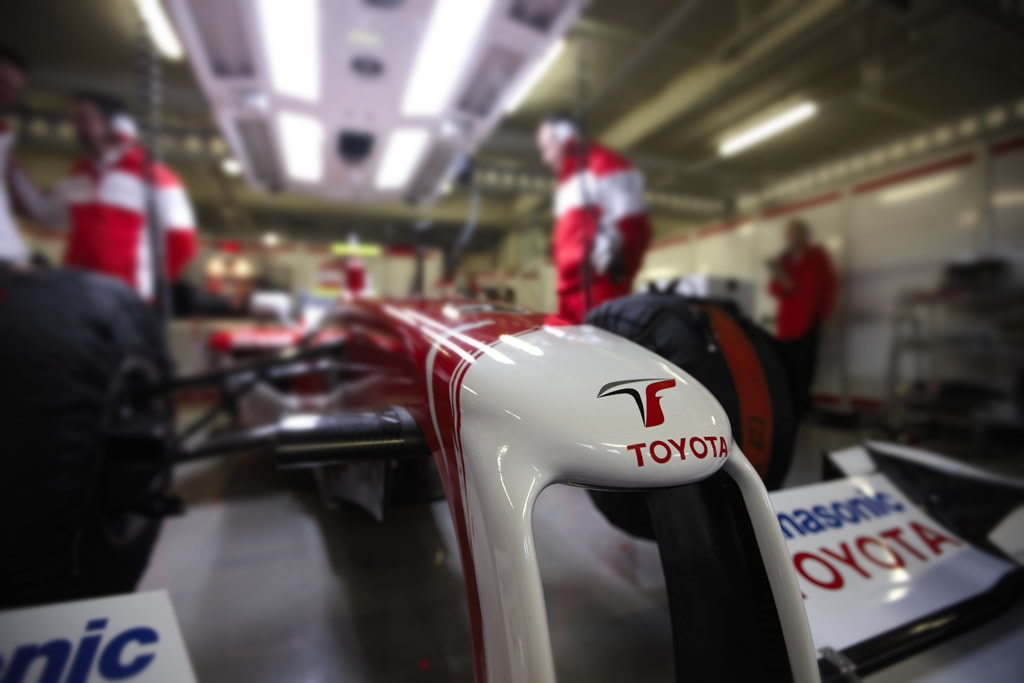Toyota F1 will probably be the only team in the F1 paddock not to use the Kinetic Energy Recovery System in 2009. However, the team did work very hard through the off-season – in addition to the development in 2008 – in order to create a totally different car as compared to the preceding TF 108. And that's because the FIA have introduced a bunch of aerodynamic changes aimed to improve the F1 car's behavior on track.
Suggested by FIA's Overtaking Working Group – formed by some of the most famous technical directors in F1, including Pat Symonds (Renault), Rory Byrne (Ferrari) and Paddy Lowe (McLaren) – the new changes are most visible when referring to the front & rear wings. The new front wing is now wider than the one in 2008, while the rear one is narrower and placed higher than before.
The new package was introduced in order to improve cars' handling while tailing. It's no news that drivers were finding hard to overtake a car in front of them because of the aero vibrations. However, with the new design of the wings, as well as a more “flowing” central section, those vibrations were mostly eliminated.
Toyota's race driver and F1 veteran Jarno Trulli took a few moments to explain how the new aerodynamic package works in a short video released by Toyota Motorsport shortly after the launch of their TF 109 in mid-January. Of course, his comments don't come as a shock to anyone, as most of the new features were over-analyzed by the media in the after-launch.
The main idea is that everything has been set up to improve airflow around the car. Also, the return of the slick tires will have the immediate effect of increased speed and better handling when cornering.
Here's how Trulli sees the aerodynamic changes underwent by Toyota's 2009 challenger.
Suggested by FIA's Overtaking Working Group – formed by some of the most famous technical directors in F1, including Pat Symonds (Renault), Rory Byrne (Ferrari) and Paddy Lowe (McLaren) – the new changes are most visible when referring to the front & rear wings. The new front wing is now wider than the one in 2008, while the rear one is narrower and placed higher than before.
The new package was introduced in order to improve cars' handling while tailing. It's no news that drivers were finding hard to overtake a car in front of them because of the aero vibrations. However, with the new design of the wings, as well as a more “flowing” central section, those vibrations were mostly eliminated.
Toyota's race driver and F1 veteran Jarno Trulli took a few moments to explain how the new aerodynamic package works in a short video released by Toyota Motorsport shortly after the launch of their TF 109 in mid-January. Of course, his comments don't come as a shock to anyone, as most of the new features were over-analyzed by the media in the after-launch.
The main idea is that everything has been set up to improve airflow around the car. Also, the return of the slick tires will have the immediate effect of increased speed and better handling when cornering.
Here's how Trulli sees the aerodynamic changes underwent by Toyota's 2009 challenger.
